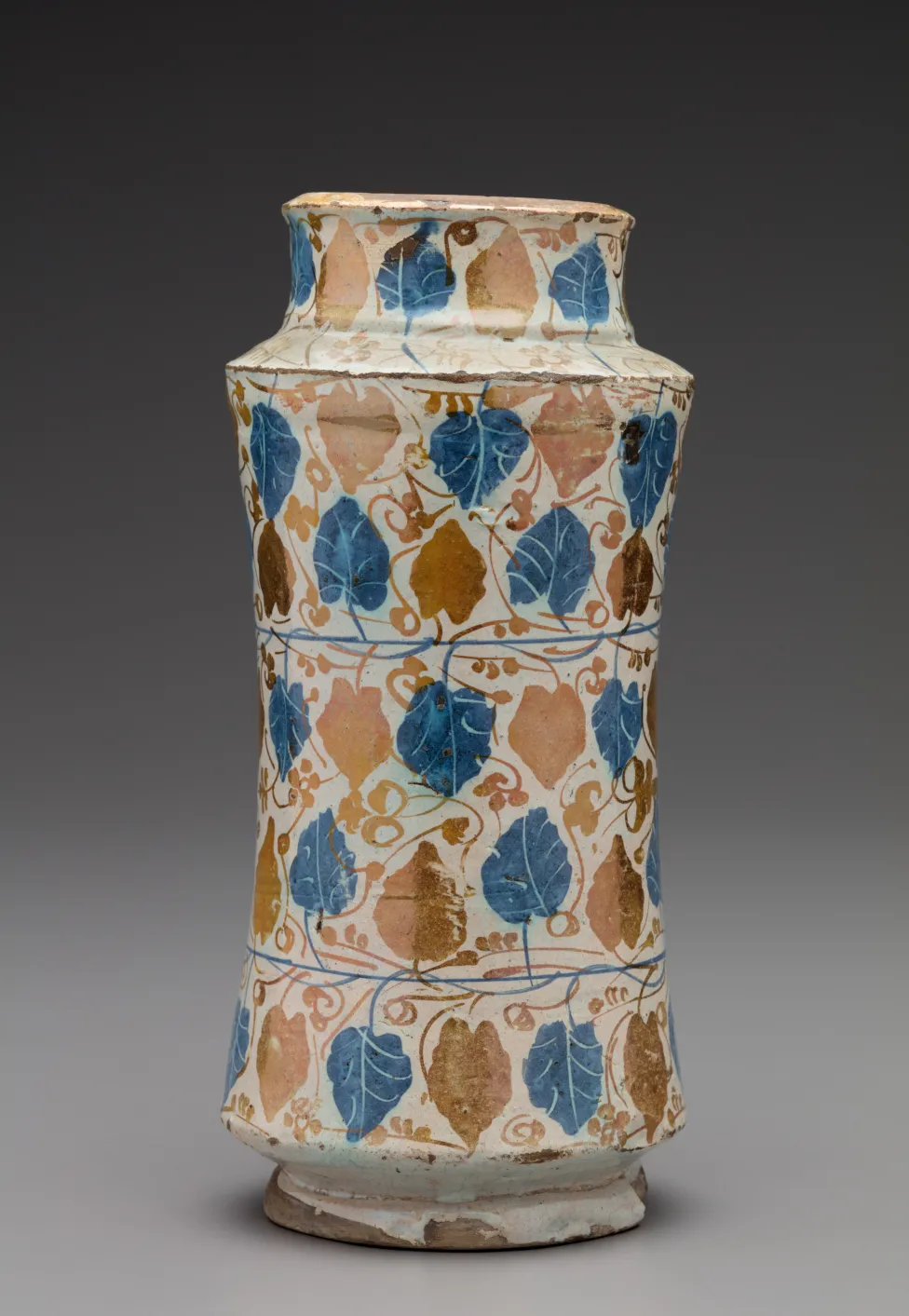Member Lecture | The Art of Dining: Food Culture in the Islamic World
Dates, Saffron, and Broth: Eating for Health in Medieval Islam
Cities such as Damascus, Cairo, and Baghdad were important centers for the practice of medicine and gastronomy between the tenth and the fourteenth centuries. Michelle Al-Ferzly, a research associate at the Metropolitan Museum of Art who holds a PhD from the University of Michigan, examines the objects and manuscripts that were integral to the practice of eating for health in the medieval Islamic world, from collections of recipes and diet books to pharmacy jars.
The Art of Dining: Food Culture in the Islamic World brings together 230 works from the Middle East, Egypt, Central and South Asia, and beyond to explore connections between art and cuisine from ancient times to the present day.
Image: Spain (Manises). Pharmacy Jar, 1440–80. Tin-glazed earthenware with cobalt and luster. Detroit Institute of Arts, Gift of K. T. Keller, 63.358.

Dates, Saffron, and Broth: Eating for Health in Medieval Islam
Cities such as Damascus, Cairo, and Baghdad were important centers for the practice of medicine and gastronomy between the tenth and the fourteenth centuries. Michelle Al-Ferzly, a research associate at the Metropolitan Museum of Art who holds a PhD from the University of Michigan, examines the objects and manuscripts that were integral to the practice of eating for health in the medieval Islamic world, from collections of recipes and diet books to pharmacy jars.
The Art of Dining: Food Culture in the Islamic World brings together 230 works from the Middle East, Egypt, Central and South Asia, and beyond to explore connections between art and cuisine from ancient times to the present day.
Image: Spain (Manises). Pharmacy Jar, 1440–80. Tin-glazed earthenware with cobalt and luster. Detroit Institute of Arts, Gift of K. T. Keller, 63.358.